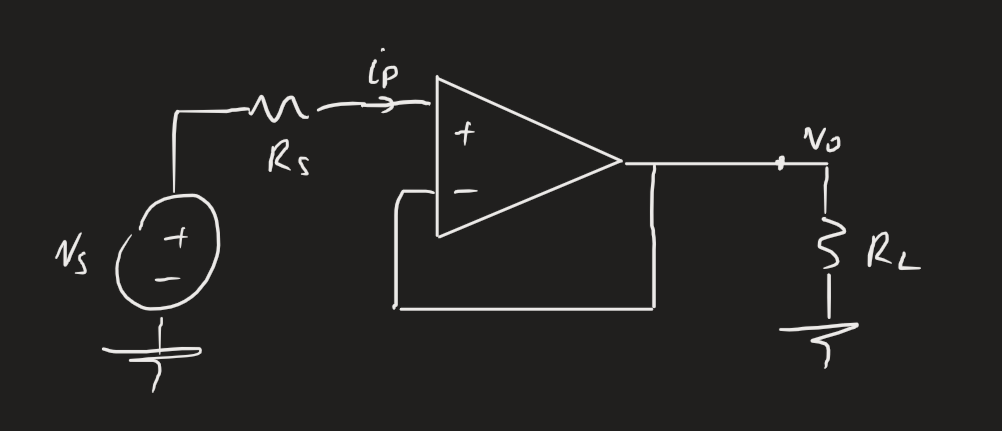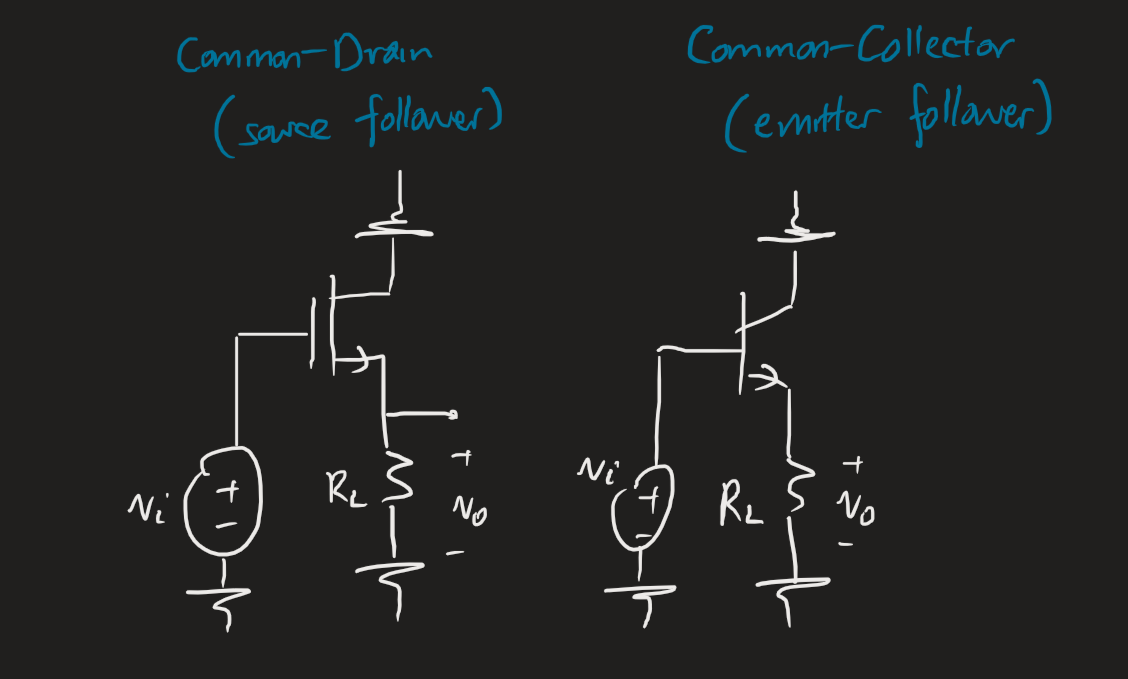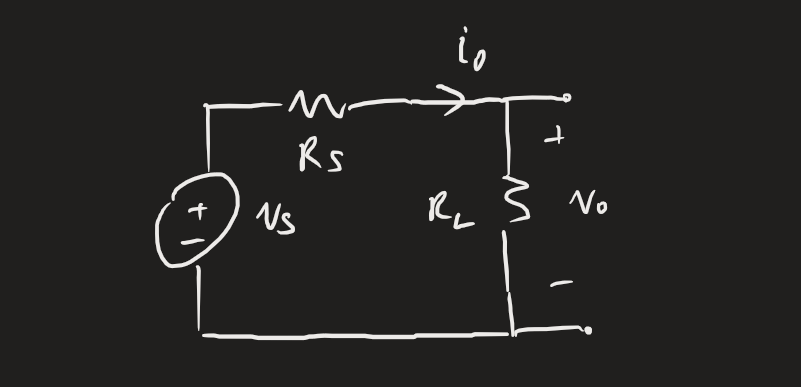The buffer amplifier (with many other names; buffer follower, voltage follower) is a special type of amplifier with a gain . There are two main ways we can implement a voltage follower: with an operational amplifier, or with a transistor amplifier (as an emitter follower or source follower).
What’s the point of an amplifier with a gain of 1? In every case, we always have a large input resistance, so ; and a small output resistance. What this means is that most of the signal’s strength will be properly applied over the load, with no phase change.
Implementation
In the op amp case, we have a feedback connection without resistors, so . Because , then for any value of we have
So the circuit has a gain of 1.
 The gain function for each transistor amplifier is given by:
The gain function for each transistor amplifier is given by:
As , , with no phase shift.

Motivation
The idea is that the signal from may be weak and we can’t deliver too much current to the load without overloading and destroying the signal. Instead, we reproduce the signal with the “strength” of the op amp. If the load draws a lot of current, then the op amp can give a sufficient amount of current without the signal strength being diminished.
Imagine we didn’t have an amplifier though:
 We would get a reduced output current and voltage:
We would get a reduced output current and voltage:
See also
- Superdiode, a circuit with a similar graph but only for positive .